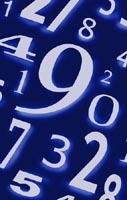What Is Digit Span?

Digit span is a common measure of short-term memory, i.e. the number of digits a person can absorb and recall in correct serial order after hearing them or seeing them. As is usual in short-term memory tasks, here the person has to remember a small amount of information for a relatively short time, and the order of recall is important.
To test the auditory digit span of a person, say numbers slowly in one second intervals, in a monotone voice. Say, for example, 6-1-5-8 and have the person repeat it back. If he can, then say 9-2-4-7-5. The person must be able to say a 4 digit sequence back correctly 75% of the time on the first try to be considered at a short-term memory of 4, and it is the same for each higher digit. A two-year-old should have a short-term memory of 2, a three-year-old of 3, a four-year-old of 4 et cetera up to seven years old. The average in our society for a seven-year-old to adult is 7.
According to Cindi Ringoen, a neurodevelopmentalist, in order to begin to utilize phonics beyond memorizing a few individual sounds, a child must have an auditory digit span close to six. Research has also demonstrated that dyslexic children typically do poorly on digit-span tests and other measures of short-term memory. This indicates that short-term memory, especially for sequence, is a foundational skill of reading. Therefore, a logical first step to helping the struggling reader or dyslexic would be to increase his short-term memory.
|